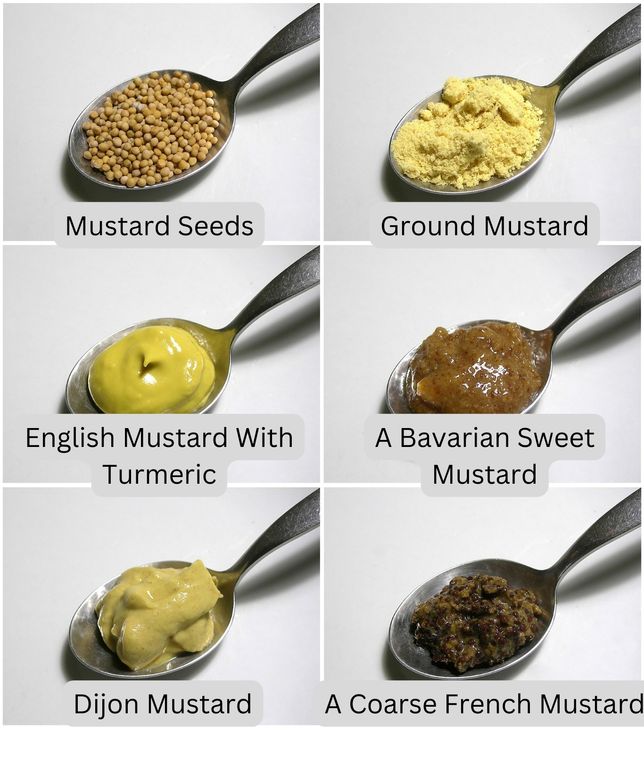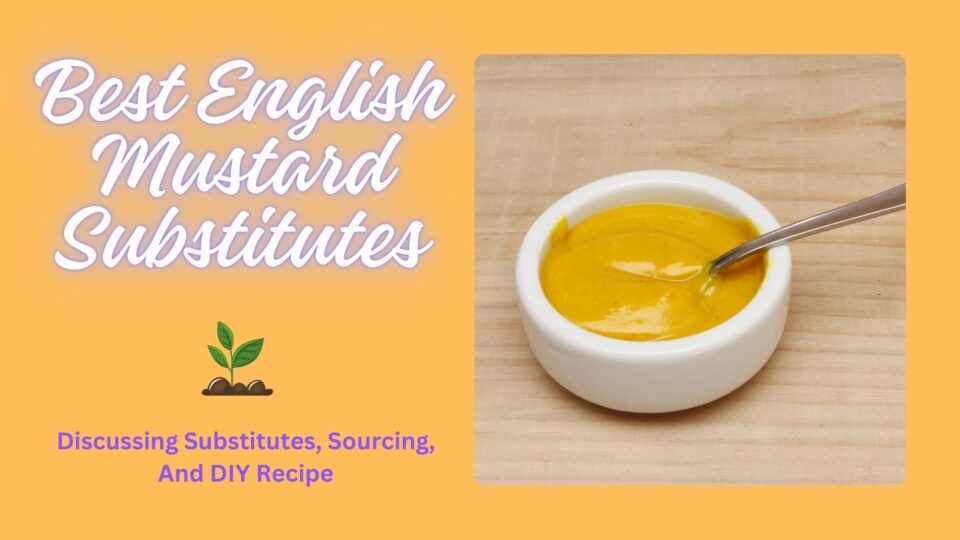What are your options when you need English mustard substitutes? Mustard is a popular condiment and English mustard finds several uses in English and British cuisine.
Usually, since mustard is such a common condiment, finding the right substitute is not very difficult. The best substitutes for English mustard are Dijon mustard, German mustard, prepared mustard, creole mustard, and ground mustard (yellow). Apart from these non-mustard options like horseradish and wasabi can be decent substitutes as well.
To be clear, many of these standard preparations of mustard can be substituted for each other in many (not all) cases. As we see, many of the alternatives for English mustard work as substitutes for dry mustard as well.
Now that we have the basics, let’s get into the details and see how these substitutions can work and how to make the best of them.
Table of Contents
Top Substitution Options For English Mustard
1. Dijon Mustard
Dijon Mustard, also known as French Mustard, is a great choice when you want a substitution for English Mustard. Both of these have similar profile and texture, though there is a variation in the taste and flavor.
English mustard usually offers a sharper flavor and is hotter than Dijon mustard. However, while the distinction exists, the condiments still have a similarity in flavors.
So, Dijon Mustard can work as an English Mustard substitute in a 1:1 ratio, though you might want to increase the quantity of French mustard slightly to manage the heat and flavor of the recipe.
2. Other Mustard Types And Prepared Mustard

Original image by Rainer Zenz, edited by Fir0002
Text to the above image was added by article author for publishing here
While we mention Dijon Mustard (French Mustard) separately for its popularity and use, there are several other similar options available.
Many cuisines around the world use mustard and as such, there are several variations of this condiment that you could use. Though each type has slight variations, most of them can work as English mustard substitutes.
These options are German mustard, Chinese mustard, Creole mustard, and spicy brown mustard (or deli mustard). Each of these has its own properties, but can be used as a substitute for English mustard when necessary.
An exception here would be the American mustard or yellow mustard, the famous yellow condiment used with American foods, and usually fast food. It’s very mild and even somewhat sweet, so it doesn’t work well as a substitute for the notably sharp and strong English mustard.
3. Horseradish Sauce
Horseradish belongs to the same family of plants as mustard. The family relation sees some similarities in the flavors of the two. This means horseradish can often work as a substitute for most mustard types, with some variations and changes to better suit individual requirements.
Making horseradish sauce involves grating the plant root and mixing it with other ingredients like sour cream or heavy cream, vinegar, and salt. Some people prefer to skip the cream and use mayonnaise instead.
Horseradish is significantly more potent than mustard and has a sharper flavor. So, even with the presence of cream, it can feel quite sharp. When using it as a substitute,
It’s usually a good idea to start with smaller quantities of horseradish sauce, then add more if you feel it’s required. The usual substitution ratio is 1:2, which means using one spoon of horseradish sauce where the recipe calls for 2 spoons of English mustard.
In any case, horseradish sauce can be a decent alternative to English mustard in several recipes.
4. Wasabi
The famous wasabi also belongs to the same plant family as horseradish and mustard. As such, the sharp flavors of wasabi might also come in useful to work as a replacement for English mustard.
However, wasabi has a much sharper flavor than mustard. Also, thanks to its celebrated flavor, wasabi is significantly more expensive than mustard and similar ingredients. Using just a smidge of wasabi can often be enough to get the same effect as a spoon of mustard.
But let’s be real here. While wasabi is academically a workable substitute for English mustard, it isn’t a practical option.
The expensive and flavorful wasabi is much better used for its own merit and recipes, rather than as a substitute for any other ingredient.
5. Ground Mustard
Ground mustard is the key ingredient that goes into making English mustard. Well, other ingredients play their part in giving English mustard its celebrated flavor, but if you’re short of options, ground mustard will do the trick.
Brown mustard with a little bit of yellow mustard could be good for this use, creating a similar sharp flavor. In fact, this is the basic ingredient for English mustard if you would like to make some at home by yourself. Speaking of that, let’s get to the DIY recipe as well.
7. DIY English Mustard
In case the substitutes don’t quite tickle your taste buds, you can make your own English mustard at home. The recipe and ingredients are simple enough and making it yourself can be far cheaper than buying it from the store.
There are several ways you can go about preparing the mustard, I’m choosing a relatively simpler recipe.
Here are the ingredients you’ll need:
- ¾ cup brown mustard seeds
- ¼ cup yellow mustard seeds
- Apple cider vinegar
- Powdered turmeric (optional)
- Water
- Salt
You can alter the type or amount of mustard seeds to suit your taste. Yellow mustard seeds are relatively mild, brown is sharper, and black has the most intense and pungent flavor. You can choose the combination that works best for you.
Put the mustard seeds in a bowl and pour apple cider vinegar over it. Add enough vinegar to just cover the mustard, but don’t overdo it.
At this point, you can cover the mix and let it soak overnight or even 1-2 days. When you’re ready, add salt suited for your taste and run a blender through the bowl. This gives it a good consistency and mixes the ingredients well.
If you want the yellow-colored look that several store-bought mustards have, add a little bit of turmeric before using the blender. The turmeric adds that beautiful yellow color, while also adding a bit of its own pungent flavors to the mustard.
If you want a still sharper flavor, you can also add a tiny amount of horseradish sauce along with the turmeric. Many packaged English mustard products do indeed use a small amount of horseradish sauce. Although, it’s not a necessity and several products skip this ingredient.
Once your English Mustard is ready, let it stay unused for a couple of days. This will reduce the pungency and give it a better taste.
Working With English Mustard Substitutes
Getting an English Mustard substitute should not be difficult in most cases. After all, mustard is a fairly common ingredient in many parts of the world and variations are easily available. Even whipping up your own batch of DIY English mustard is fairly convenient. It can take some time getting ready, but it doesn’t require much effort.

